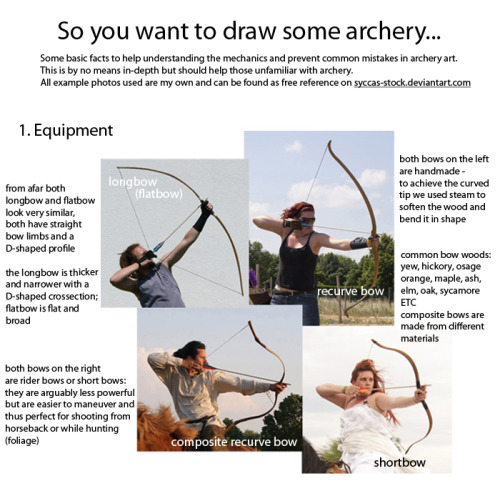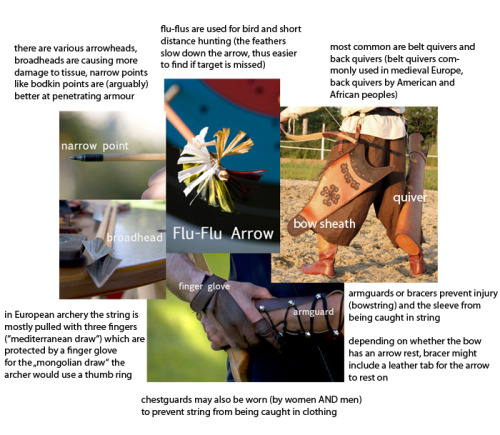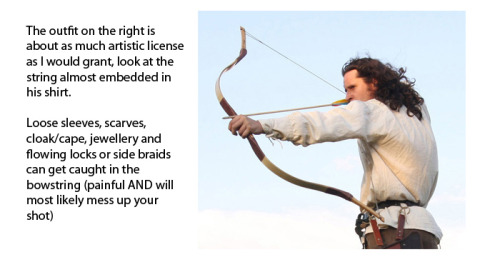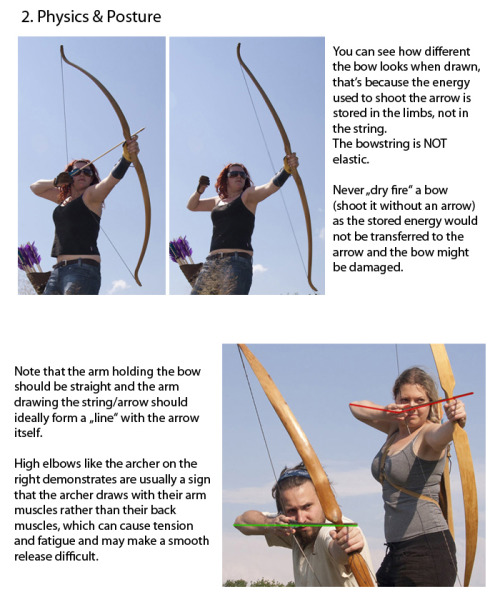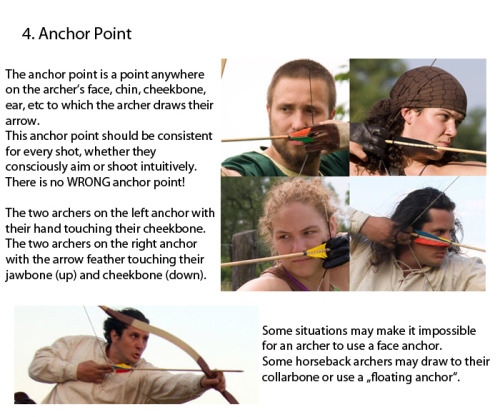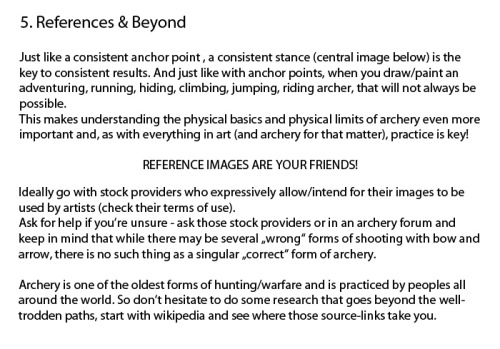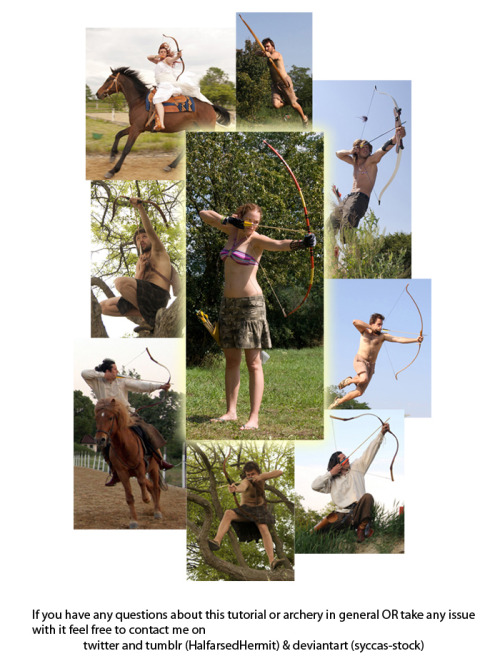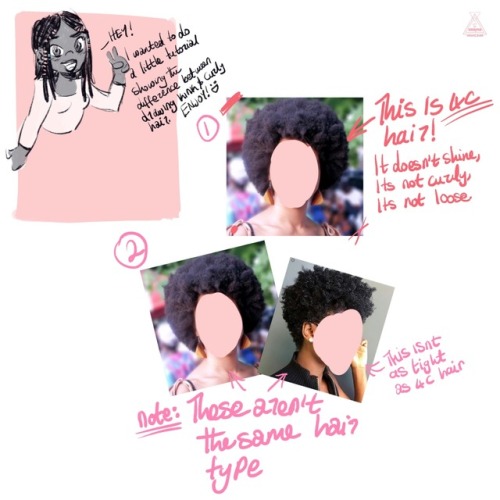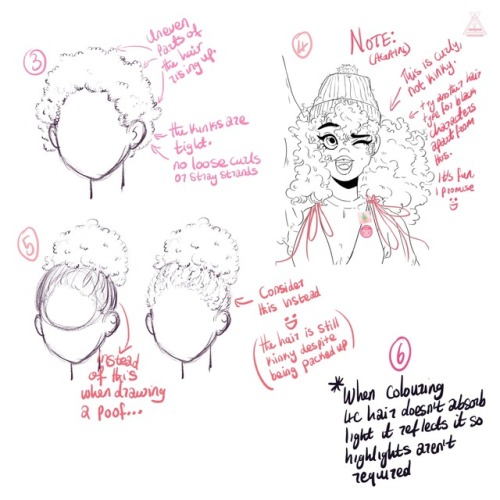
saving here all the tutorials that helped me learn something
280 posts
How To Draw Afro Textured 4c Hair - An Explanation/Tutorial
How to draw Afro textured 4c hair - an explanation/Tutorial
For those of you that don’t know what 4c hair is, 4c hair is a hair texture type that contains coils to small and tight that the hair appears to be more puffy rather than curly ( like to photo below ) this is in NO WAY to be confused with curly hair. there is a drastic difference.

As a black artist that primarily draws characters with 4c hair, I’ve been asked many times to do a tutorial on 4c hair so here we go~
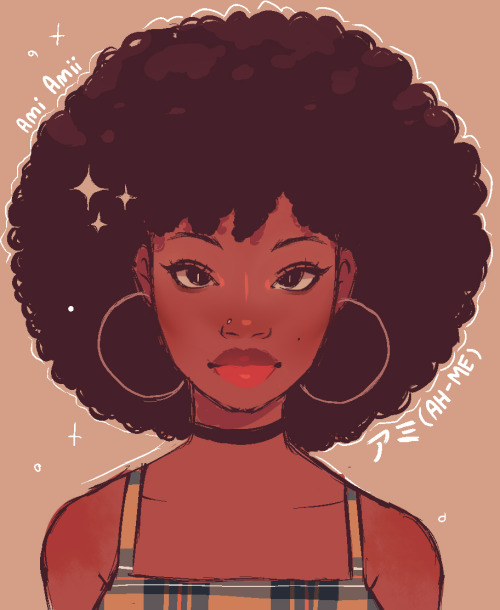
before we get into 4c hair, lets take a moment to fully understand it by talking about hair texture in a general sense first
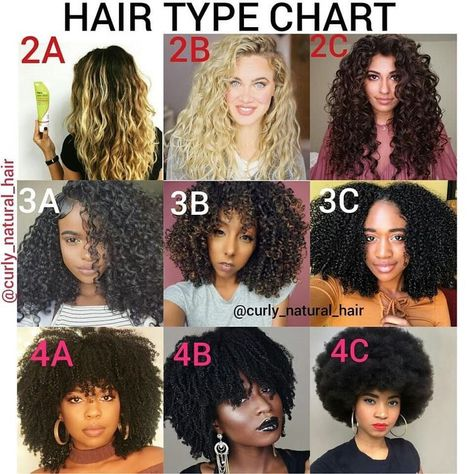
let’s take a look at this example of straight hair vs curly hair ( 1 type straight hair vs 3 type curly hair )

If you take a moment to compare the two you’ll notice straight hair is flat, it has no texture. Straight hair perfectly hangs down similar to liquid-like silk. It’s lack of curl pattern is the reason as to why it hangs perfectly flat.
curly hair on the other hand doesn’t lie down flat and silky like straight hair, It’s more thick. Curly hair in it’s raw and unstyled state has a trapezoid like shape this is because the sides of the hair spread more outward.

So why is this? Why is straight hair flat and curly hair thick?
the answer to that question is a thing called piling up. When it comes to hair texture, the shape of the hair strands aren’t the only thing that matters, its how the strands coexist with each other, Curly hair strands coexist by piling up on top each other.
moisture also effects hair texture too, different hair types absorbs moisture differently, thus the thickness of each hair type is different.


…..soooo, how does this all relate to how to draw 4c hair??
Well let’s take a look at the drawing below. Notice how the arrows go outward more as the hair texture gets curlier. As we’ve already discussed, this is because hair piles up, The curlier the hair texture, the more it piles up on each other, the bigger it gets, the more outward the arrows go.
Out of any hair texture, 4C hair has the most curls. Because of this, the hair piles up on each other so much that it doesn’t lie down flat like straight hair, nor does it make a trapezoid like shape like curly hair, it instead becomes more cloud like.❤️

This is what you need to take into account when it comes to drawing 4C hair.

Think of it as piling up a bunch of cotton balls on each other. The most cotton on top of top to lead to a bigger patch of cotton. this is 4c hair.
How to not draw 4c hair:
Garnet fanart. Let’s talk about Garnet Fanart. I notice a trend that when artists draw Garnet from Steven universe, her hair texture is usually changed to 3 type curly like texture. This subtle form of White washing has confused me because this is inaccurate.

Garnet’s hair is in the shape of a cube. Though 3 type hair piles up on each other, it isn’t curly nor thick enough for their hair to stay in the shape of a cube. Curly hair lies down more than 4c hair. So garnet’s hair being in the shape of a cube is a dead giveaway that it is 4C. Why do you think hairstyles like flat tops are usually seen on black men with 4c hair? It’s because, the 4c hair texture is thick and strong enough to stay in whatever shape you put it in.

please, if you’re drawing a character with 4c hair, avoid drawing it like curly 3 type hair, this is very anti-black and texturist.
So, how do you draw 4c hair?
honestly, its the most easy thing in the world



i wanna clarify that blobby looking 4c drawings ( like the one on the top left ) can work depending on how cartoony your art style is.
Another thing that I want to greatly clarify when it comes to drawing 4C hair is, YOU. DONT. NEED. TO. DRAW. EVERY. HAIR. STRAND!…..like, seriously. I’ve gotten many messages about how 4C hair is hard to draw, and it’s always left me confused; but then I find out that the same people that have trouble drawing 4C hair, attempt to draw every single strand of hair. This is unnecessarily time consuming because it’s merely impossible to get every single detail down, especially when you have a simple cartoon style. 4C hair does not require much effort, all you’re doing is drawing lumps. It’s that simple, nothing more nor nothing less.
The reason why I greatly advise all of you to avoid drawing every single hair strand is because in real life, when you look at a 4C textured Afro, your eyes don’t pick up on each individual hair strand like straight or curly hair. 4C hair, appears to be more undefined and cloud like, so attempting to draw each and every individual strand is unnecessary and will most likely end up looking inaccurate.



Anyways! that’s it for now! there will be a part 2 to this tutorial that will come out next week! i hope you guys have learned from this and apply it to your black character in your art!~
-
 stupidonebada reblogged this · 9 months ago
stupidonebada reblogged this · 9 months ago -
 pitafish liked this · 9 months ago
pitafish liked this · 9 months ago -
 the13thtrashlemur liked this · 9 months ago
the13thtrashlemur liked this · 9 months ago -
 onepokerhen reblogged this · 9 months ago
onepokerhen reblogged this · 9 months ago -
 boopydoopydoop liked this · 9 months ago
boopydoopydoop liked this · 9 months ago -
 silentstep liked this · 9 months ago
silentstep liked this · 9 months ago -
 in-the-beginning-of-madness reblogged this · 9 months ago
in-the-beginning-of-madness reblogged this · 9 months ago -
 in-the-beginning-of-madness liked this · 9 months ago
in-the-beginning-of-madness liked this · 9 months ago -
 small-yandere-child reblogged this · 9 months ago
small-yandere-child reblogged this · 9 months ago -
 br-disaster reblogged this · 9 months ago
br-disaster reblogged this · 9 months ago -
 spectrefyt liked this · 9 months ago
spectrefyt liked this · 9 months ago -
 myownpersonalartsurvey reblogged this · 9 months ago
myownpersonalartsurvey reblogged this · 9 months ago -
 harpgirl17 liked this · 9 months ago
harpgirl17 liked this · 9 months ago -
 telesto-of-the-tesco liked this · 9 months ago
telesto-of-the-tesco liked this · 9 months ago -
 redception liked this · 9 months ago
redception liked this · 9 months ago -
 lxerui liked this · 9 months ago
lxerui liked this · 9 months ago -
 stillnotgoodatthis reblogged this · 9 months ago
stillnotgoodatthis reblogged this · 9 months ago -
 thethunderwolf reblogged this · 9 months ago
thethunderwolf reblogged this · 9 months ago -
 grimsmoke reblogged this · 9 months ago
grimsmoke reblogged this · 9 months ago -
 grimsmoke liked this · 9 months ago
grimsmoke liked this · 9 months ago -
 cupids-antlers reblogged this · 9 months ago
cupids-antlers reblogged this · 9 months ago -
 gnoll-king reblogged this · 9 months ago
gnoll-king reblogged this · 9 months ago -
 artsycervidae reblogged this · 9 months ago
artsycervidae reblogged this · 9 months ago -
 mirroredmasquerader liked this · 9 months ago
mirroredmasquerader liked this · 9 months ago -
 thestinkyman liked this · 9 months ago
thestinkyman liked this · 9 months ago -
 w3irdgrl liked this · 9 months ago
w3irdgrl liked this · 9 months ago -
 dick-chugger reblogged this · 9 months ago
dick-chugger reblogged this · 9 months ago -
 artking-4 reblogged this · 9 months ago
artking-4 reblogged this · 9 months ago -
 artking-4 reblogged this · 9 months ago
artking-4 reblogged this · 9 months ago -
 xstarrydawnx liked this · 9 months ago
xstarrydawnx liked this · 9 months ago -
 sunnyfl-0-wer liked this · 9 months ago
sunnyfl-0-wer liked this · 9 months ago -
 afroboi222004 liked this · 9 months ago
afroboi222004 liked this · 9 months ago -
 gamingqueen2018 liked this · 9 months ago
gamingqueen2018 liked this · 9 months ago -
 whizzardfucking reblogged this · 9 months ago
whizzardfucking reblogged this · 9 months ago -
 ouprettythings liked this · 9 months ago
ouprettythings liked this · 9 months ago -
 ruby16san liked this · 9 months ago
ruby16san liked this · 9 months ago -
 moth-mayh3m liked this · 9 months ago
moth-mayh3m liked this · 9 months ago -
 more-silver-than-gold reblogged this · 9 months ago
more-silver-than-gold reblogged this · 9 months ago -
 prettyboyusopp reblogged this · 9 months ago
prettyboyusopp reblogged this · 9 months ago -
 ant777stuff liked this · 9 months ago
ant777stuff liked this · 9 months ago -
 spectredraws13 liked this · 9 months ago
spectredraws13 liked this · 9 months ago -
 selfsabotage0-0 liked this · 9 months ago
selfsabotage0-0 liked this · 9 months ago -
 dee-daa liked this · 9 months ago
dee-daa liked this · 9 months ago -
 artistswhohatestheirart liked this · 9 months ago
artistswhohatestheirart liked this · 9 months ago -
 flor-n-cheese reblogged this · 9 months ago
flor-n-cheese reblogged this · 9 months ago -
 kcmeo7 reblogged this · 9 months ago
kcmeo7 reblogged this · 9 months ago -
 shamoy-x liked this · 9 months ago
shamoy-x liked this · 9 months ago -
 aherbalista11 liked this · 9 months ago
aherbalista11 liked this · 9 months ago -
 cornbread33y2 liked this · 9 months ago
cornbread33y2 liked this · 9 months ago -
 t-tdotpng liked this · 9 months ago
t-tdotpng liked this · 9 months ago
More Posts from Somehelpfulart-tutorials
Tips for writing and drawing Wheelchair using characters: Your character's wheelchair can tell us a lot about them
When you first start learning character design, you'll often be told something to the effect of "use your character's outfit to tell us more about them" - and this same principles can be applied to a disabled character's mobility aids.
Mobility aids like wheelchairs, to many disabled people, are a part of us. They can be an extension to a person's body and chances are, if you're going to be using this piece of equipment every day for the foreseeable future (or at least for a good amount of time for the foreseeable future), it's going to start reflecting some aspects of your personality, your interests, your passions, especially when you remember, a lot of people get their wheelchairs custom built for them.
You can use your character's wheelchair to tell us a lot about them without ever needing to show/describe them directly.
Let me show you two examples:


Take a look at these two wheelchairs. they're similar in shape and build, but still pretty different to each other. Can you make some guesses about their users based only on what's shown here?
intended answers below:
Please note, the following points are all generalisations and the real world is rarely this simple. This is to demonstrate how to use disability aids to contribute to your character's design, not how to make assumptions about real people in real life.
So here are some similarities between the chairs:
Both wheelchairs have ridged frames, this means the wheelchair can't be folded in any way. These kinds of chairs can imply a few different things depending on the person. They are typically lighter, sturdier and more durable, and indicate the person probably will be using the wheelchair for a long time and/or has the money to get something built to last (or lives in a place where cost not an issue due to universal/subsidised access to healthcare). They are also typically better to travel with when flying, as they are less likely to be broken by airport security/staff.
Both wheelchairs also lack anti-tip wheels, which are a third set of wheels that extend from the back of the chair. Them not being present could indicate the person is likely pretty confident in their ability to use the chair without worrying about tipping out. It could also indicate they are in an environment where the anti-tips could be more of a hazard than a help, such as on rough terrain.
So lets look at some specifics for the green wheelchair:
Take a look at the wheels. The front wheels are pretty small and appear to be solid, while the back wheels appear to be quite narrow (compared to the orange chair anyway). This indicates the user likely lives somewhere with decent accessibility like a (well funded) city where they are unlikely to encounter unpaved/dirt roads/grass. Small front wheels and thin back wheels are good for manoeuvrability and a smooth ride over even terrain, but they will get stuck as soon as bumps appear, so this probably isn't an issue for this person.
While its a bit hard to tell unless you have seen other similar wheelchairs, this wheelchair is very long in the front, meaning the footplate and front wheels are further away from the seat than most. There could be a few reasons for this. One either indicates the person has very long legs, or a lack of motion in their knees, making it harder to bend their legs. This is moves the chair's centre of gravity forward by a decent amount, making it harder to tip back, which could indicate the person's legs are very light. You tend to see this most often in the wheelchairs of bilateral leg amputees, who are at a greater risk of tipping backwards due to a lack of weight at the front of the chair (even if they wear their prosthetics).
The colour of the chair is bright. This could simply be the character's favourite colour, or maybe this colour has some significance to them?
There are stickers on the side of the chair relating to the Paralympics. This could indicate the person is a fan, or perhaps had some involvement in the games?
The wheelchair has handles on the back, but they are able to be folded down. This is a popular feature for people who are independent enough to go out on their own, but still want to have the option for some help. folding down the handles also deters random strangers from grabbing at you (an unfortunately common experience for wheelchair users).
There is some mild paint scratching to the front of the wheelchair, but nothing too noticable. This is typical of older chairs and people who are a little rough on their chairs. Maybe they've had a few stacks and falls throughout the years, probably going a decent speed.
Ok, now let's look at the orange chair
This wheelchair has very large, inflatable front wheels, and very thick back wheels. This will make the chair slower and less manoeuvrable on flat/even surfaces, but much, much easier to push on rough terrain. This is supported by the amount of mud on the wheelchair.
The seat on this wheelchair tilts upwards slightly. This is called a bucket (or according to an old basketball teammate of mine, a dump-truck lol). This is a feature you typically see in wheelchairs made for people with spinal injuries who are unable to move their legs and engage their lower bodies or core to help keep them stable.
The back of this chair is very low, indicating that if this wheelchair user has a spinal injury, it's probably pretty low on their spine, likely fairly close to the hips, making the person a low-level paraplegic. Higher-level paraplegics and quadriplegics usually need a higher back to help support them and keep them from flopping over, since all the muscles below their place where their spine broke either doesn't work, or is significantly weaker. Higher backs though can get in the way of pushing and reduce mobility, so people who need less support will likely opt for a lower back rest.
This wheelchair has no handles, which indicates the user is probably very independent and doesn't need a lot of help getting around.
The paint on this wheelchair is very scratched up, showing the person is very tough on their wheelchair and doesn't care to get the paint touched up.
And here are the characters who own these wheelchairs


The owner of the green wheelchair is an amalgamation of a few people I knew from when I played wheelchair basketball. They're a bilateral leg amputee, and judging by their outfit (The Official National Wheelchair Basketball uniform for Australia), they're an elite athlete. This wheelchair is not the one they play sport in, but it still needs to be durable enough to withstand the rough treatment of airport staff when traveling, as well as heavy day-to-day use that comes with being an active person. While it needs to be rough, the person also seemed to want to prioritise speed and manoeuvrability, and likely doesn't need to worry about rough terrain too much, so they probably live in a major city.
The owner of the orange chair was inspired by a family friend of mine. They live on a farm, and need a chair that can handle life in those conditions, rough terrain and all. This comes at the cost of speed and manoeuvrability on smoother terrain, but honestly, anyone who's lived in the country knows you won't find many of those around there anyway, so that's not too big of a sacrifice. They are paraplegic, are very confident in their ability to use their wheelchair, and probably doesn't need help too often, but still benefit from some extra stability support from the raised seat on their chair.
Conclusion
Once again, these are generalisations, and in real life there are always exceptions, but I hope this helped demonstrate what I meant when I said you can use your character's wheelchair to tell us more info about them if you're smart about it.
I originally planned to do a whole series of these, showing a wider variety of wheelchairs and the people who they belong to, but I guess I kind of forgot because they've been sitting, abandoned on my hard drive for the last 2 years 😅. If that's something you folks would be interested in seeing though, let me know, I'd happily revive the series lol.


